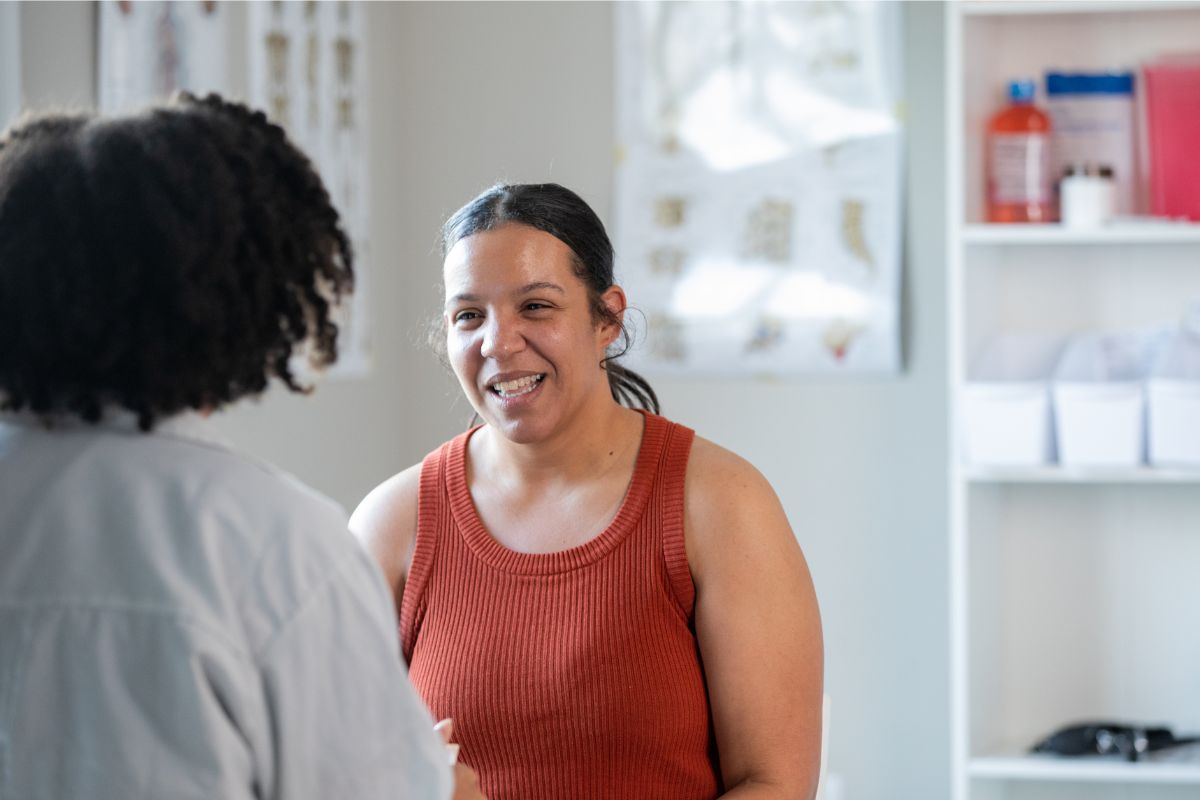Authored by Sarah Oslund, Director of Integrated Behavioral Health at apree health
The recognition of the impact of behavioral health on physical health and the increasing need post-pandemic has brought behavioral health services at the forefront for payers and employers. Mid-pandemic estimates show that 41.5% of Americans are experiencing some symptoms of anxiety and depression, with 22% of Americans having a diagnosed behavioral condition (1). Of those with a behavioral health diagnosis, this group drives 41% of the total health care cost (2).
apree health emphasizes whole person care, and for us, that means an integrated behavioral health program as part of advanced primary care model. This service provides evidence-based interventions for mild to moderate mental health conditions for those seen at our clinics. Advanced primary care (APC) lends itself well to having behavioral health embedded in the care team. Unlike traditional primary care, where the provider spends limited time with the patient, within the advanced primary care model, providers know their patient and truly are engaging in wholistic treatment.
In a traditional setting, a primary care physician may offer a referral to mental health care but with the median wait time for in-person and telepsychiatry appointments at 67 and 43 days, respectively, the barriers to health are high (3). At apree, primary care providers can seamlessly hand off the behavioral health care component to a licensed Behavioral Health Clinician with quick access to care (often available same day), removing the long wait time as a barrier to receiving mental health care. Working as a team, the behavioral health clinician and primary care provider can focus on treatment of the whole person.

The impact of apree’s behavioral health program can be seen in numerous patient stories. One such patient presented for her annual wellness exam with high blood pressure. She was screened for mental health symptoms, a standard practice in our annual wellness exams, and moderate symptoms of depression and mild symptoms of anxiety were identified. The patient noted that she had tried to be seen through her Employee Assistance Program (EAP) but her appointment was canceled and she felt frustrated by the process so did not reschedule. A warm hand off was done to the BHC and she was able to share a little bit about her struggles and schedule an intake for two days later as she did not have time that day to complete the full intake. The patient was seen for an intake and seven follow-up sessions focused on triggers to her depression.
By her second follow up visit her depression and anxiety scores were minimal. She continued to be seen for several sessions to reinforce and maintain interpersonal skills, as her relationship difficulties were the impetus for her depression. During her time in behavioral health treatment she also worked with a whole health coach to address eating and exercise habits. This work, coupled with her reduction in depression, allowed her to begin exercising and making improvements in her diet. She also demonstrated increased compliance with her blood pressure medication and her blood pressure readings were in the normal range.
At apree, there are many patient stories like this. Taking a team approach to care, wrapping around the patient demonstrates outcomes to the whole person. This particular patient completed treatment with behavioral health with significantly reduced depression and anxiety as well as had made great strides in her physical well-being through her work with the whole health coach. All three providers- the primary care provider, the behavioral health clinician, and the whole health coach were actively coordinating about the patient’s care. Goals set with each provider was complementary and allowed the patient to see the connection between her physical and mental health. This is not something you get to see play out so beautifully in the fee-for-service world. This and so many other stories like it highlight the true value of value based care.

- Vahratian A, Blumberg SJ, Terlizzi EP, Schiller JS. Symptoms of Anxiety or Depressive Disorder and Use of Mental Health Care Among Adults During the COVID-19 Pandemic — United States, August 2020–February 2021. MMWR Morb Mortal Wkly Rep 2021;70:490–494. DOI: http://dx.doi.org/10.15585/mmwr.mm7013e2
- https://www.trillianthealth.com/hubfs/Trends%20Shaping%20the%20Health%20Economy_%20Behavioral%20Health%20(5).pdf?hsCtaTracking=e8c9afaf-cda4-40da-9ac4-3a266069b38b%7C46f82a59-c09c-4431-8203-ad92ac5b8421
- https://www.sciencedirect.com/science/article/abs/pii/S0163834323000877#:~:text=Median%20wait%20times%20for%20in,accessibility%20and%20long%20wait%20times.





